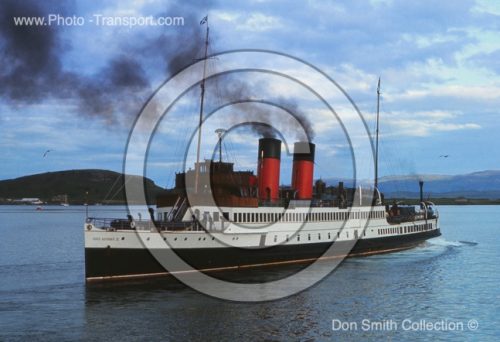Construction and early service
Built in Dumbarton: The ship was built in 1926 by William Denny and Brothers for Turbine Steamers Ltd., a company that served routes on the River Clyde.
A pioneering design: The King George V was one of the first passenger vessels to use high-pressure, geared turbines. However, the advanced engineering led to early problems, including boiler explosions that killed two firemen in 1927.
Operational routes: After being re-boilered, the steamer served popular routes to Inveraray and Campbeltown. In 1935, its ownership was transferred to David MacBrayne Ltd., and it became based out of Oban, cruising to scenic spots in the Inner Hebrides.
World War II service
During the war, the ship was requisitioned for military use and gained renown for its service in major Allied operations.
Dunkirk evacuation: In 1940, the King George V transported troops from the beaches of Dunkirk, making six voyages and rescuing 4,300 men.
Atlantic Charter: In 1941, the vessel carried Prime Minister Winston Churchill to his battleship to meet with U.S. President Franklin D. Roosevelt for the Atlantic Conference.
Later years and fate
Post-war career: After the war, the steamer returned to its cruising routes on the Clyde. It was incorporated into the Caledonian MacBrayne fleet in 1973.
Retirement and fire: The ship was withdrawn from service in 1974 and sold to a company intending to convert it into a floating pub or restaurant. In 1981, while undergoing conversion in Cardiff, a fire destroyed the vessel.
Scrapping: The fire-damaged hulk was finally scrapped in 1984, bringing an end to the ship's 58-year career 


